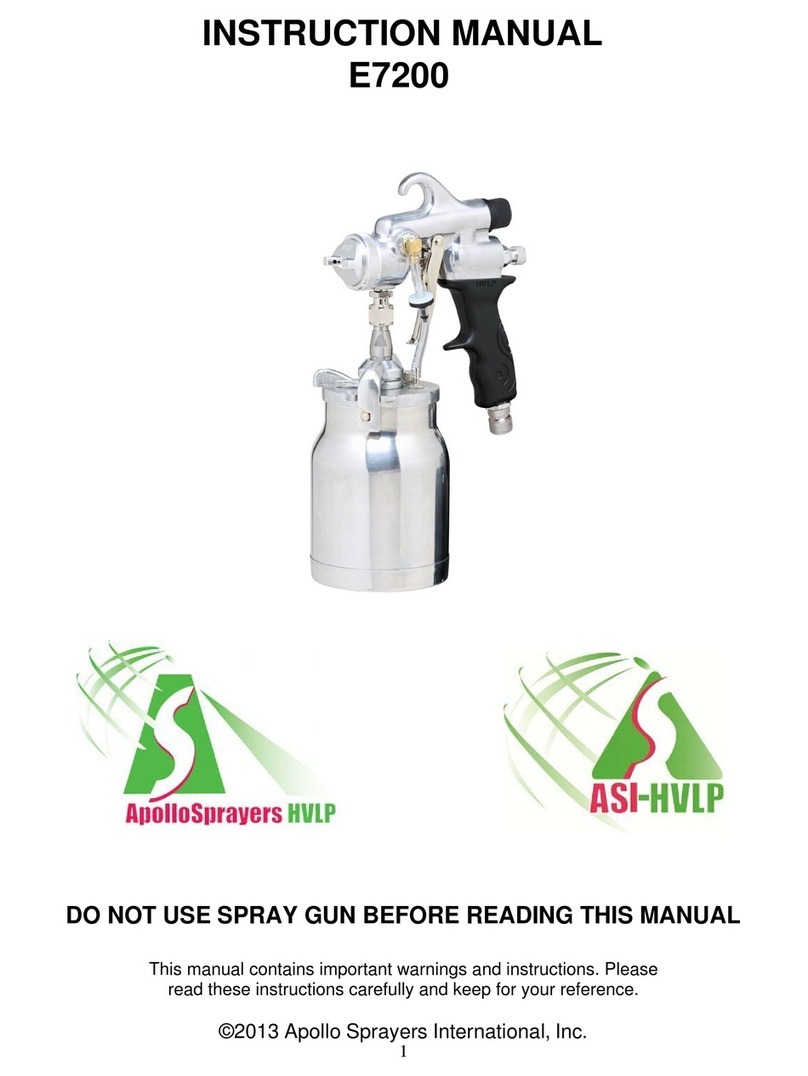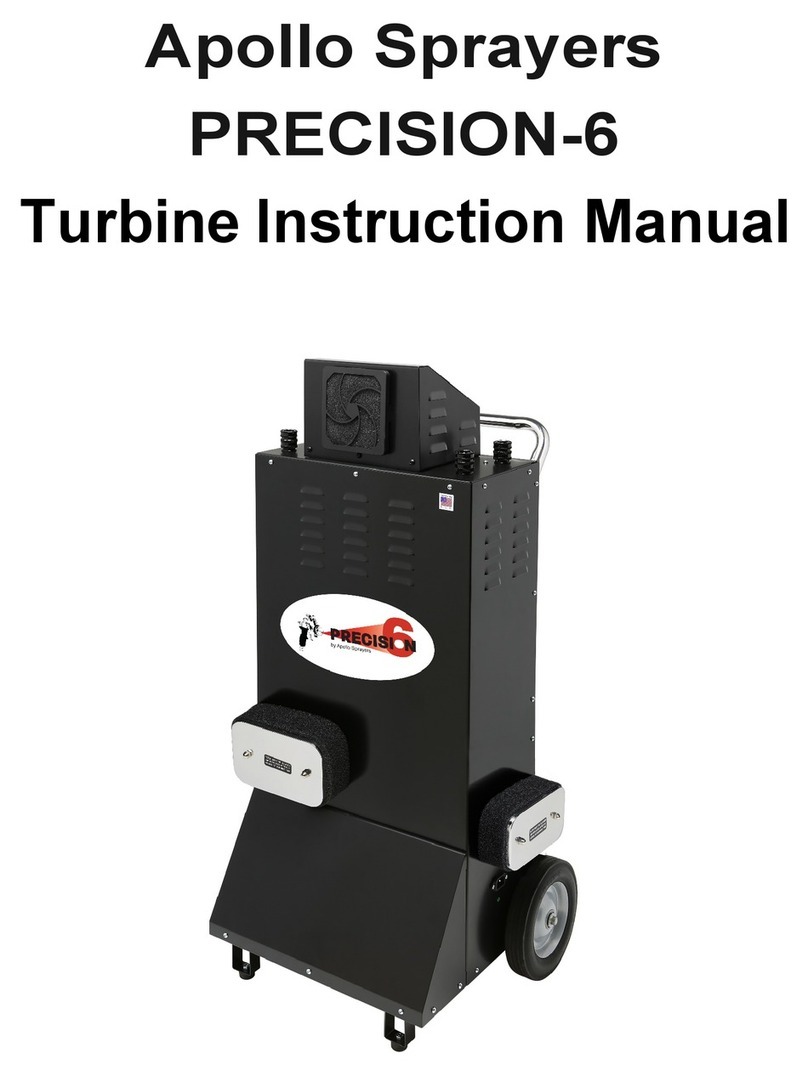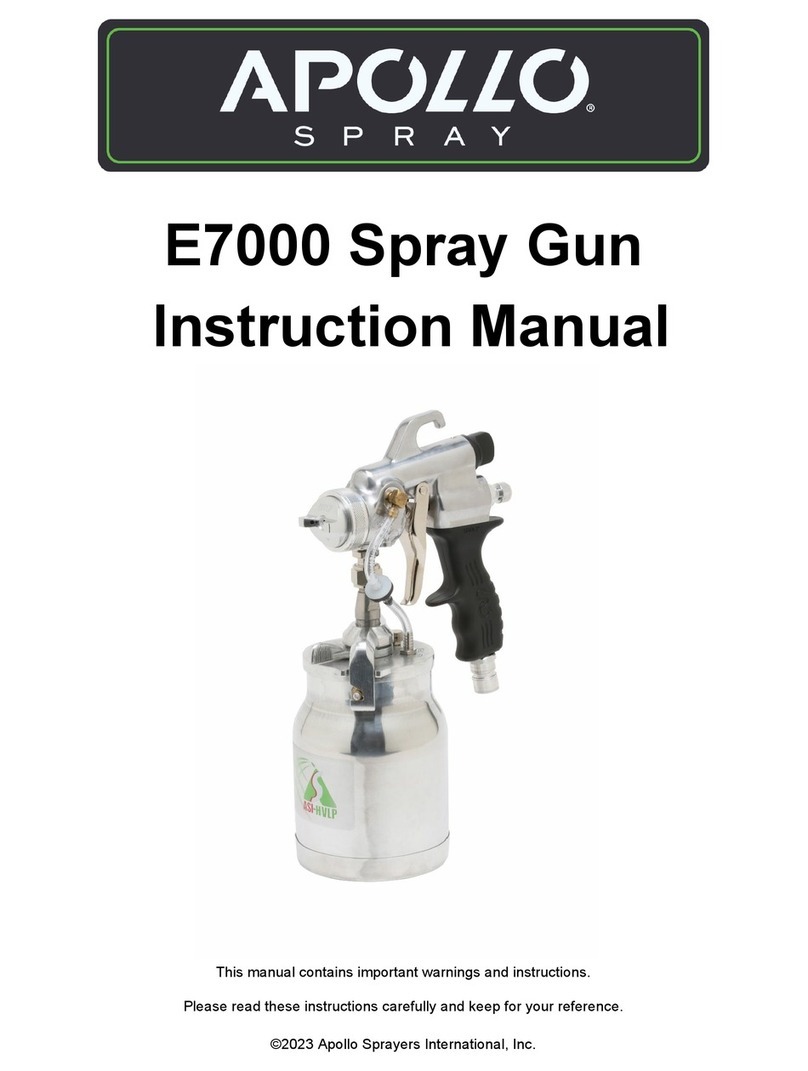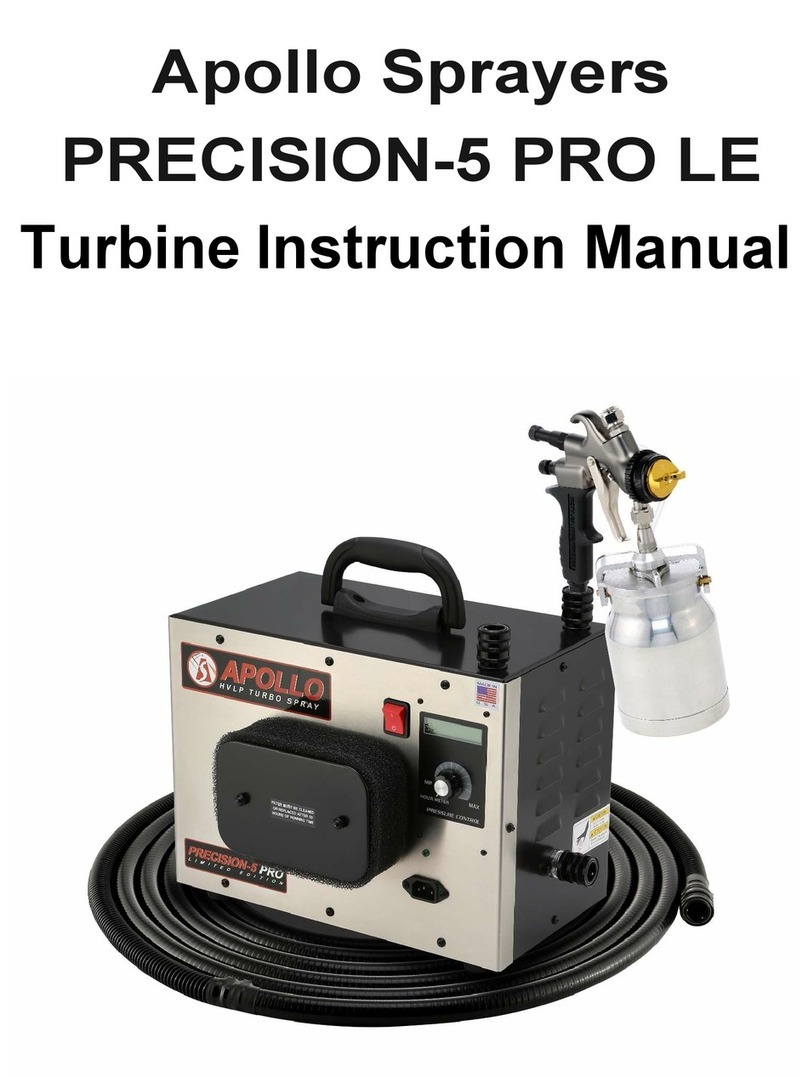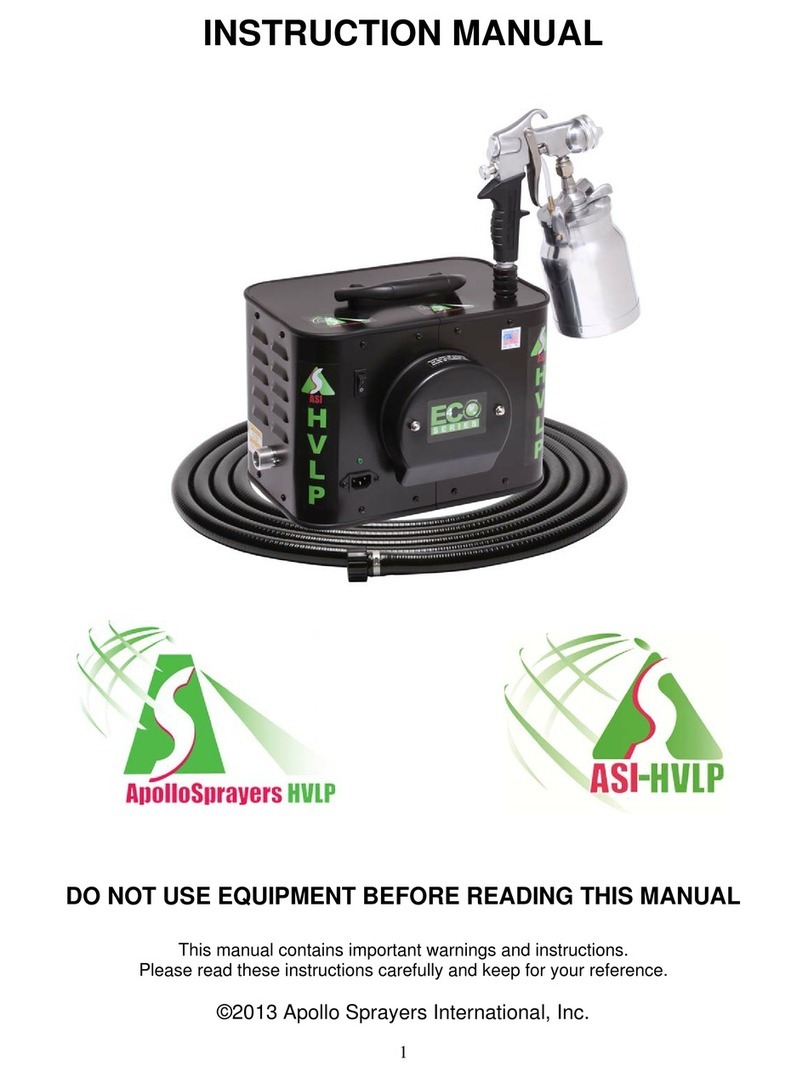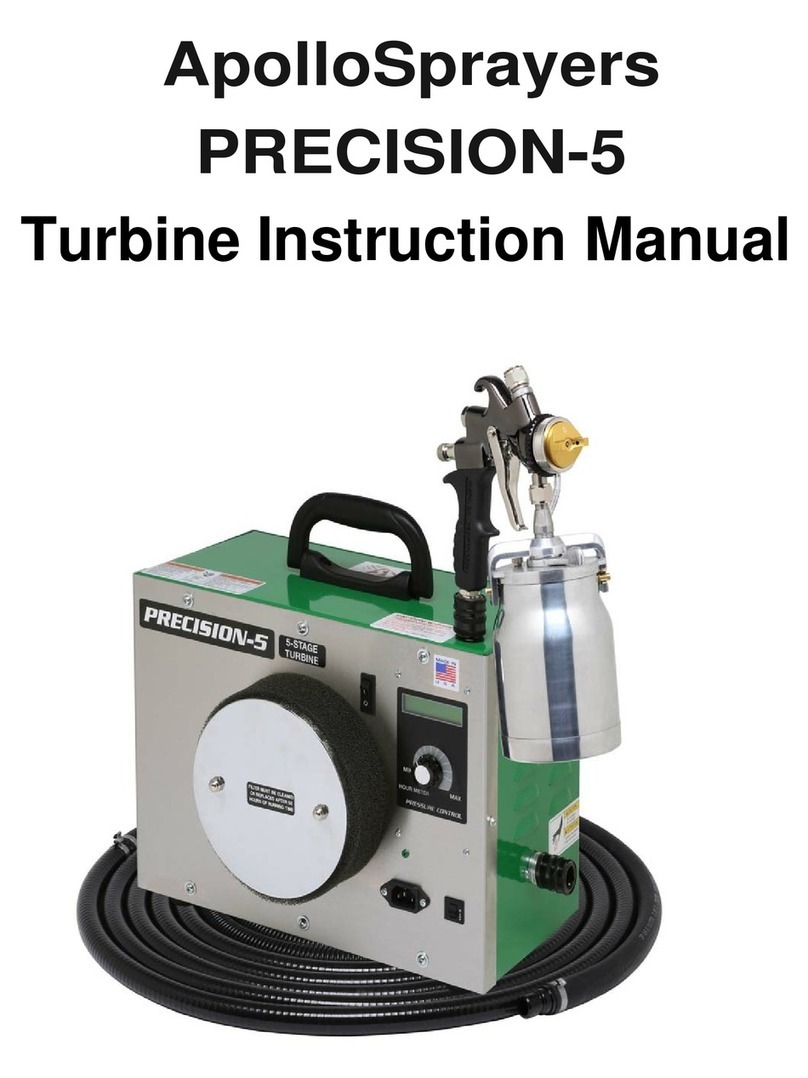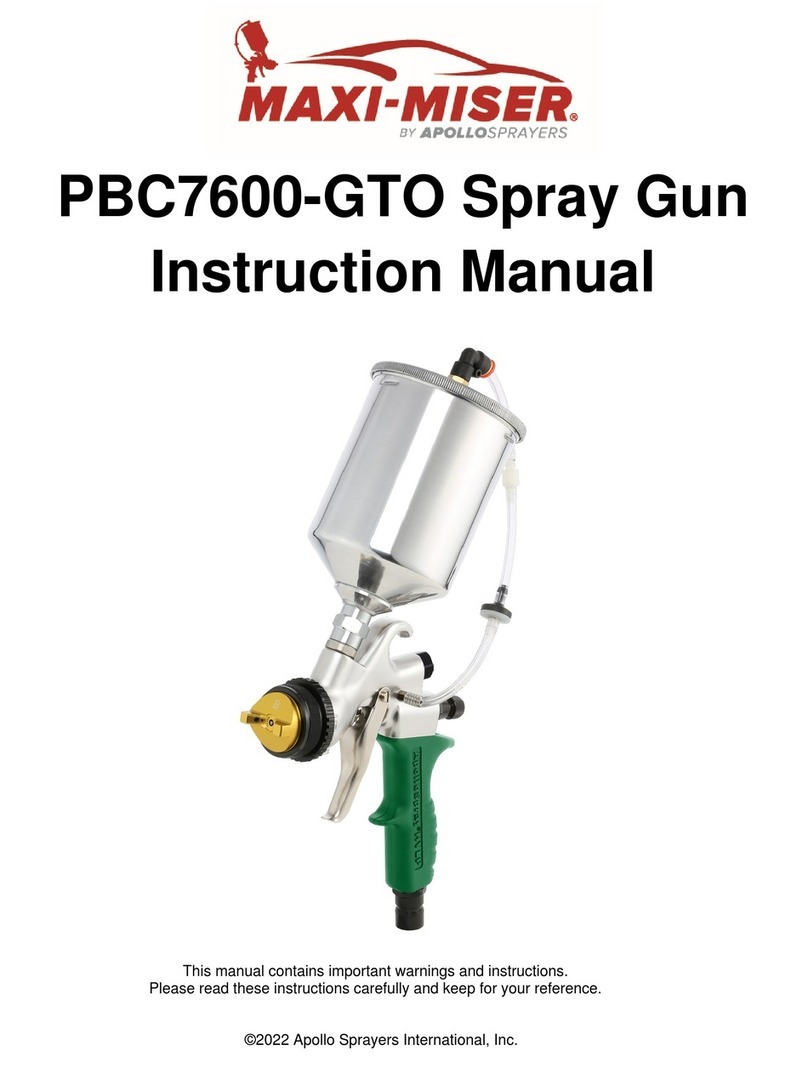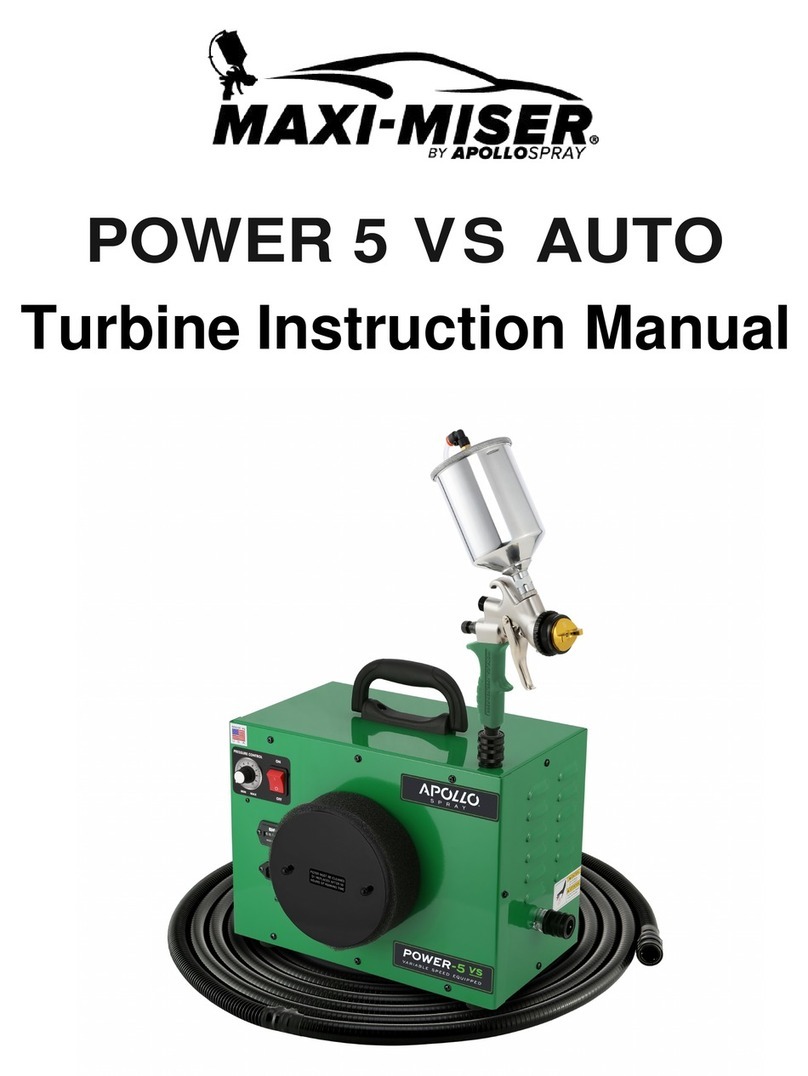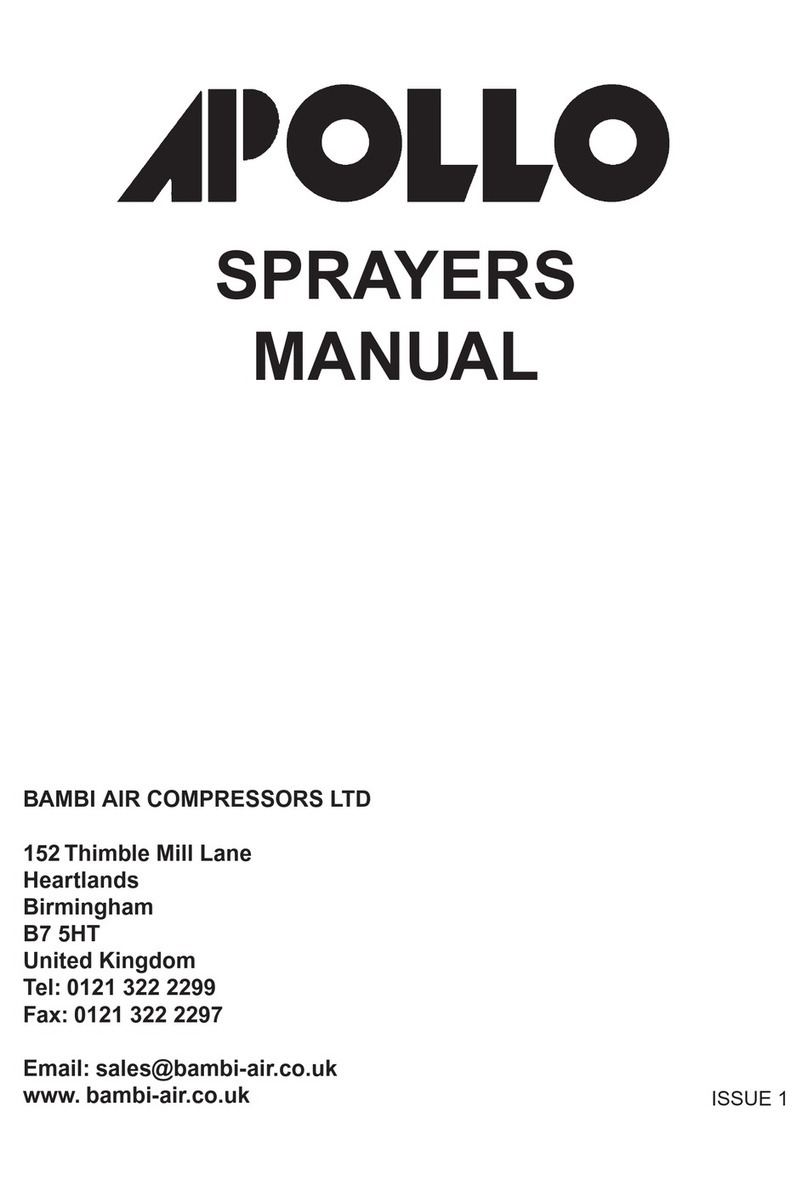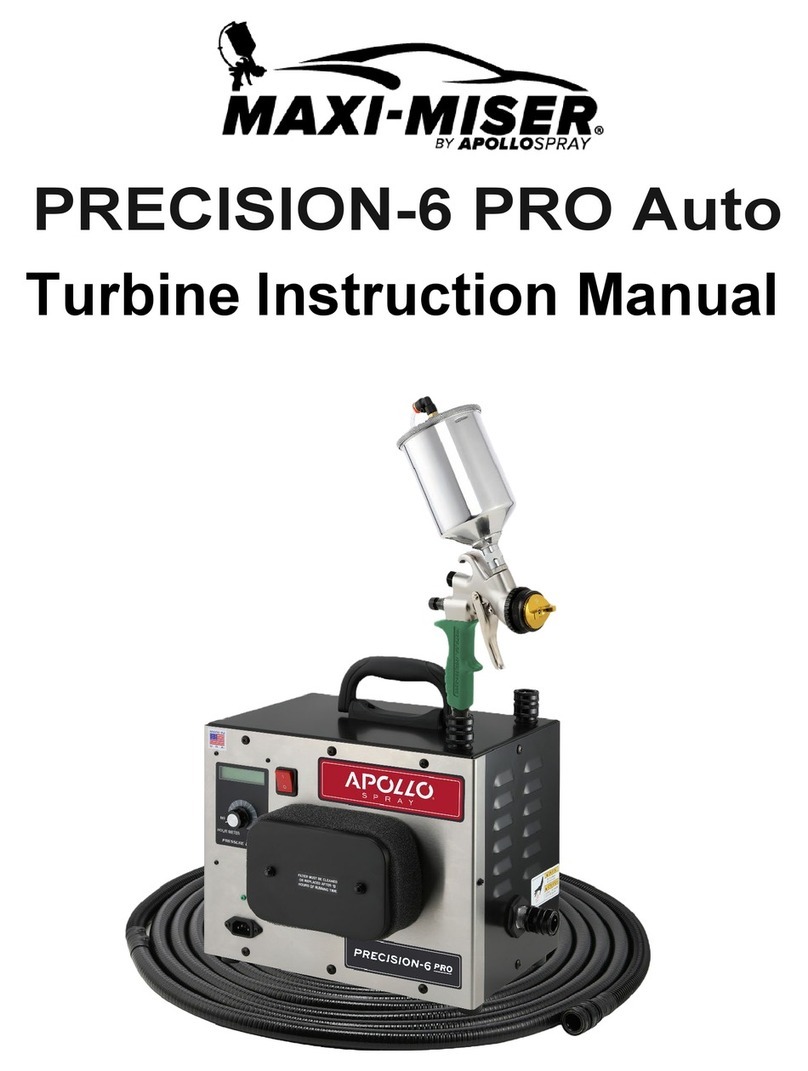
Page | 1
1. Safety
Read all instructionsand safetyprecautions before operatingthe unit.
Indicates a hazardous situation, which, if not avoided, will result in death or serious injury. Indicates a
hazardous situation, which, if not avoided, could result in death or serious injury.
Indicates a hazardous situation, which, if not avoided, could result in minor or moderate injury. NOTICE
Indicates a situation that could result in damage to the equipment or other property.
Risk of fire or explosion! Solvent and paint fumes can explode or ignite, causing severe
injury and property damage.
Paints and solvents containing HALOGENATED HYDROCARBONS can react explosively
with aluminum. Always check the product’s label before using these materials in the
unit.
Hazardous vapors: Paint, solvents, insecticides and other materials may be
harmful if inhaled, causing severe nausea, fainting or poisoning.
Make sure the room is well ventilated. Avoid all ignition sources, such as static electricity, sparks, open
flames, hot objects, sparks from connecting and disconnecting power
cords, and working light switches.
Follow the material and solvent manufacturers’ safety precautions and warnings. Do not
use liquids with flash points less than 100° F (38° C).
Static electricity can be produced by HVLP spraying. Make sure any electrically
conductive object being sprayed is grounded to prevent static sparking. The sprayer is
grounded to prevent static sparking. The sprayer is grounded through the electrical
cord.
Use a respirator or mask whenever there is a chance that vapors may be inhaled. Read
all instructions with the mask to ensure that the mask will provide the necessary
protection against the inhalation of harmful vapors.
Do not carry the turbine while spraying.
Keep the turbine at the maximum distance from the spraying area.
NOTICE
•Tipping the spray gun causes the spray gun to clog. Dried spray material also clogs the pressure
delivery tube and fittings. The spray gun does not function when clogging occurs.
•When not in use, be sure to disconnect the hose and place the spray gun into the Handi-Hold™ Docking
Station on the turbine to avoid tipping.
